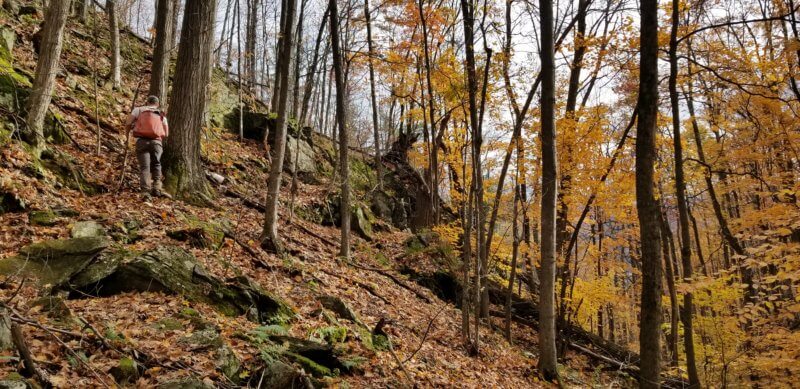An autumn forest-lover’s reading list
Into The Woods
I am often asked what books I would recommend to folks interested in learning more about forests and forestry, and so for my column this month I will recommend a few of my favorites. These books are great resources for forest-lovers, each addressing a key theme of forests and forest stewardship.
“The Hidden Forest: Biography of an Ecosystem” by Jon R. Luoma
For anyone interested in developing a better understanding of how forests work, this book is always my first recommendation. In it, Luoma follows a multi-disciplinary group of researchers at the Andrews Experimental Forest in Oregon as they collaborate to build a more complete vision of the pieces, parts and processes that make forest ecosystems function. The genius of this book is both its easy-to-read, conversational tone and its clear, accurate, nuanced description of forest ecology.
I have found that an understanding of healthy forests is not something that any of us are born with — it is a something that we need to develop. Forests are at times unintuitive, messy and complicated; they are natural communities of profound depth and complexity, dynamic systems which embody resilience and celebrate death, regeneration and change. The first step towards learning how to care for and manage forests is learning what makes them tick, and this is a great resource for doing just that.
“Reading the Forested Landscape” by Tom Wessells
Understanding the legacies on New England’s historic landscape is a key ingredient in understanding how our modern-day forests came to be. In this book Wessels, an ecologist from southern Vermont, discusses how to “read” the history of our forests using clues like stone walls.

Since the early 1800’s, nearly all of Vermont’s forests have been cleared, many of them maintained as pastures for a century or more. While your backyard woods may seem ancient, it is likely that it was a pasture within the last 60-100 years, placing it at the very beginning of the process of forest development. This is true for forests across our landscape; they are relatively young and simple, lacking many of the qualities of the old forests that covered much of our region a few centuries ago.
As such, being able to read a forest’s history both adds richness to the experience of being in the woods and is a critical part of understanding Vermont’s forests. As forest-lovers, understanding the profoundly altered condition of our forests helps us understand and contextualize the steps that may be necessary to help them recover and adapt to the many changes and stressors of the modern world.
“A Sand County Almanac” by Aldo Leopold
Published in 1949, this work is a foundational text in the conservation world. Through a series of essays, Leopold — a forester and conservationist — discusses the nuances of his relationship with the land. Perhaps the most salient contribution of this book, and Leopold’s work in general, is the idea of the land ethic — the concept that we have a moral or ethical responsibility towards the land and its forests, wetlands, wildlife and waters.
In Vermont, each of us depends on forests for clean air, clean water, climate mitigation, scenic beauty, vibrant rural economies and more. Whether we have the privilege of owning our own forest or not, each of us also affects forests locally and globally through our choices and the resources that we consume. As Leopold details in this poignant book, each of us has the opportunity and the responsibility to define our own land ethic.
“Gathering Moss: A Natural and Cultural History of Mosses” by Robin Wall Kimmerer
In “Gathering Moss,” Kimmerer, a bryologist (a scientist who studies mosses and other bryophytes) — highlights her own land ethic while guiding the reader on an exploration into the enigmatic world of mosses. Kimmerer (the author of “Braiding Sweetgrass” — another great read) demonstrates how even the tiniest parts of the forest are rich with life and worthy of our care and attention.
While we often focus on trees, research increasingly shows that the other components of forests — mosses, lichens, plants, animals, insects, fungi — are critical to their health and function. As we endeavor to manage forests thoughtfully and responsibly, it is important to consider both the massive and the minute.
(Ethan Tapper is the Chittenden County Forester for the Vermont Department of Forests, Parks and Recreation. See what he’s been up to, check out his YouTube channel, sign up for his eNews and read articles he’s written.)

